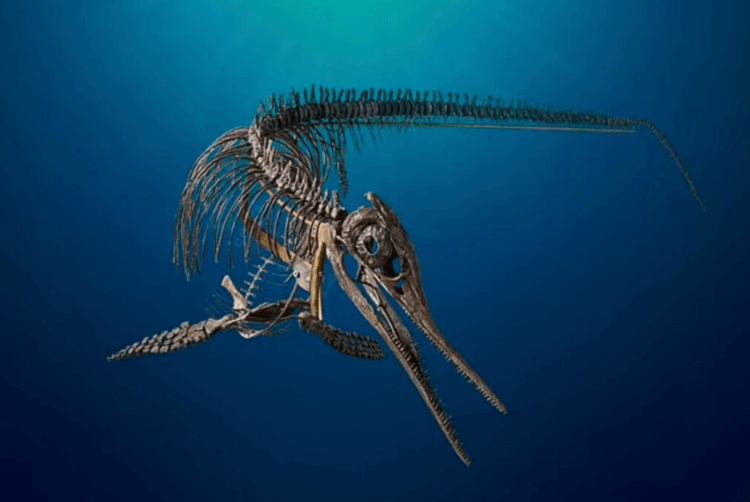Fish-like lizards, or ichthyosaurs,were very unusual creatures. With their body they resembled modern dolphins, while the teeth were like those of whales. However, they were neither fish nor cetacean mammals, but were reptiles well adapted to aquatic life. It was previously believed that these predators appeared at the same time as all other marine reptiles, that is, after the Permian mass extinction that occurred 251.9 million years ago. However, a recent study indicates that ichthyosaurs actually arose earlier. This study could force scientists to rewrite the history of not only ichthyosaurs, but also other reptiles, including dinosaurs.

Ichthyosaurs appeared earlier than scientists thought
What was an ichthyosaur animal
Ichthyosaurs are still considered the mostreptiles adapted to aquatic life. Only cetaceans managed to achieve the same level of adaptation to water conditions among animals. But they are known to be mammals.
The limbs of ichthyosaurs were modified intofins. At the same time, they had an elongated muzzle, large eyes and a streamlined torso. In terms of size, they were not inferior to modern whales. Currently, the largest known ichthyosaur is 21 meters long. We previously reported that a complete skeleton of a 10-meter ichthyosaur was discovered in England.

Ichthyosaurs were the most well-adapted reptiles for marine life.
As many studies have shown, ichthyosaurs ate molluscs - ammonites, nautiloids and squids. In addition, scientists suggest that they may also have eaten fish and smaller reptiles.
How and when did ichthyosaurs appear
According to the official version, ancient reptileswent to shallow coastal areas after the most massive extinction in the history of the Earth, which, according to one version, arose due to volcanoes. Why did reptiles need the sea at all? According to scientists, they were attracted by the niches of marine predators, which, after the mass extinction, were free.

The Permian extinction was the most massive in the history of our planet
Over time, reptiles have become more adaptableto the water - their limbs turned into flippers, and the body took on a fish-like shape. In addition, they increased in size, while the bones became hollow and lighter. The last connection with the earth was cut off when the sea lizards began to give birth to their young right in the water. They no longer needed to come ashore to lay their eggs.
According to scientists, to adapt so wellto life in water, the ancient reptiles needed not one or two million years, but much more time. However, a recent study completely breaks down the idea of when ichthyosaurs appeared and why they ended up in the water at all.
Lizard fish are much older than expected
Back in 2014 on a remote arctic islandarchipelago of Svalbard in Norway, scientists have discovered the fossils of an ancient creature. The remains were in a limestone boulder that was once silt on the seabed. The find included 11 ichthyosaur tail vertebrae.

The 250-million-year-old ichthyosaur's oldest ichthyosaur vertebrae were found to be as large as the vertebrae of its later descendants
The age of the limestone in which they were foundbones, dated to the early Triassic, that is, the remains are about 250 million years old. This means that paleontologists have managed to discover the fossils of the oldest ichthyosaur, and in general the oldest marine reptile. Prior to this, the age of the most ancient marine reptiles was 249 million years, and they were much smaller than the later ichthyosaurs. Therefore, scientists concluded that the reptiles went to sea water immediately after extinction.
However, a new study showed that the vertebraeNorwegian ichthyosaur are the same size as the vertebrae of later lizard fish. In addition, the bones have a spongy structure. The authors of the work report this in the journal Current Biology. That is, 250 million years ago, reptiles were already fully adapted to life in the sea, which means they began to live in water much earlier, obviously, before the Permian mass extinction.
If you have not yet subscribed to our YANDEX.ZEN CHANNEL, be sure to follow the link. Here you will find a lot of fascinating materials about science, technology and high technology.
The results of the study indicate that eitherscientists need to rethink the evolutionary history of marine reptiles, or else a mistake has crept into the history of the Permian extinction. But, in any case, the fossils of the Norwegian ichthyosaur are among those finds that do not fit into official science. Obviously, now it is necessary to make changes in the time frame for the appearance of the main pedigrees of reptiles.








